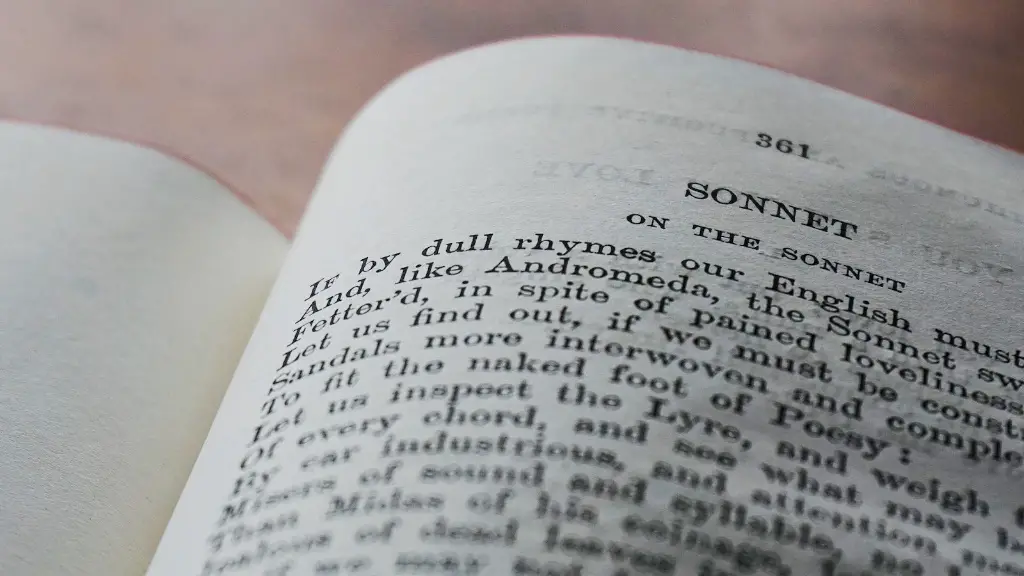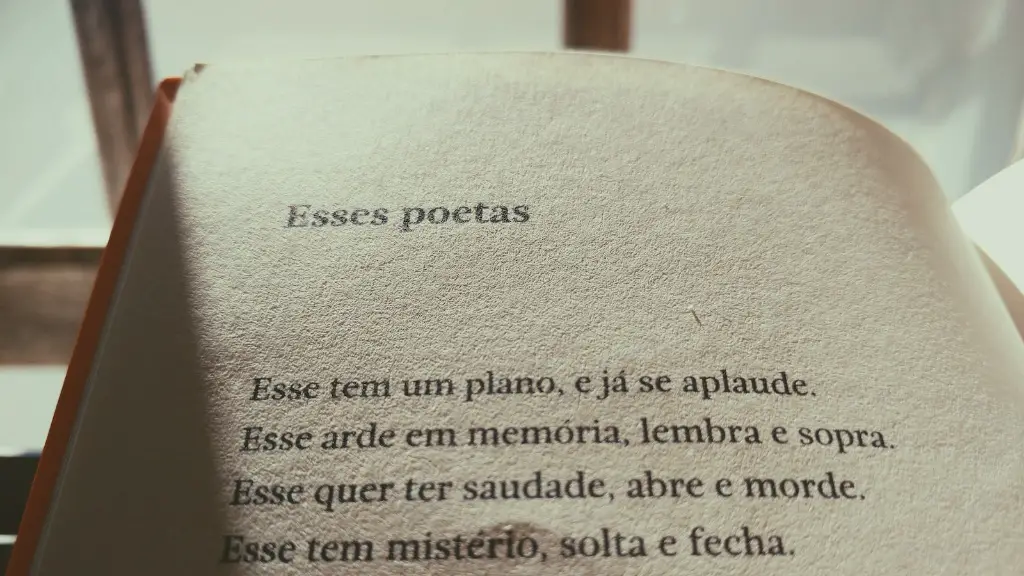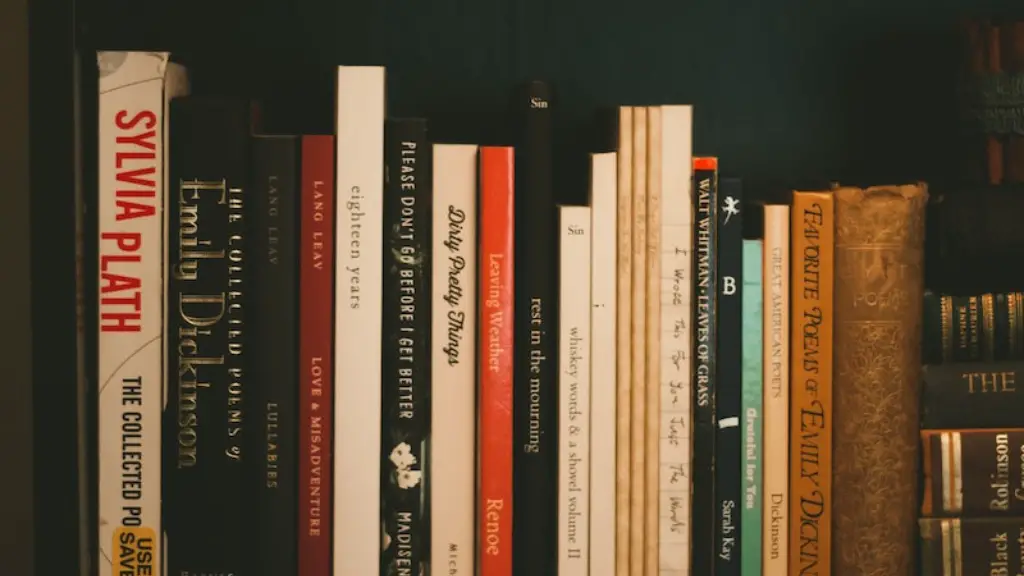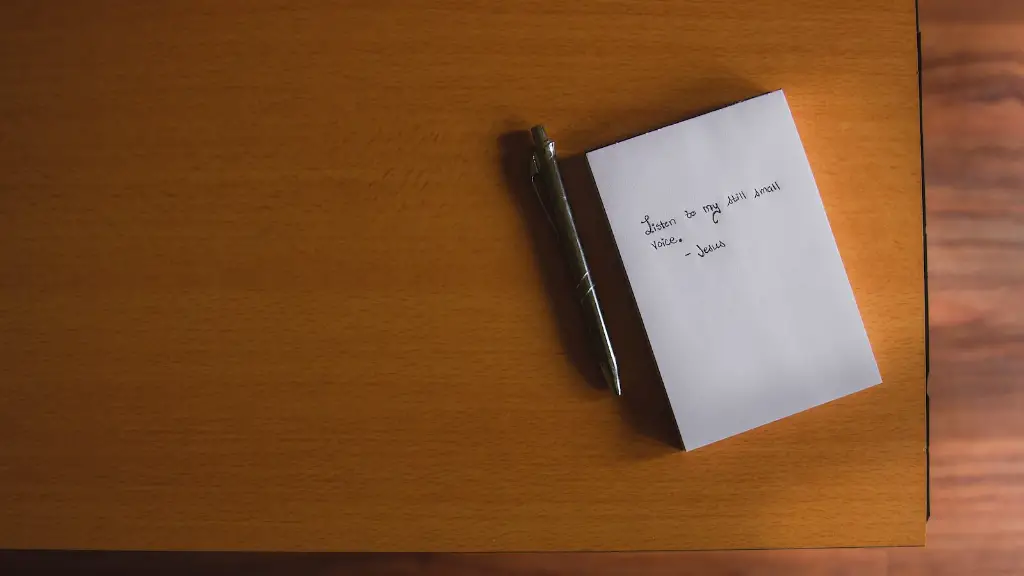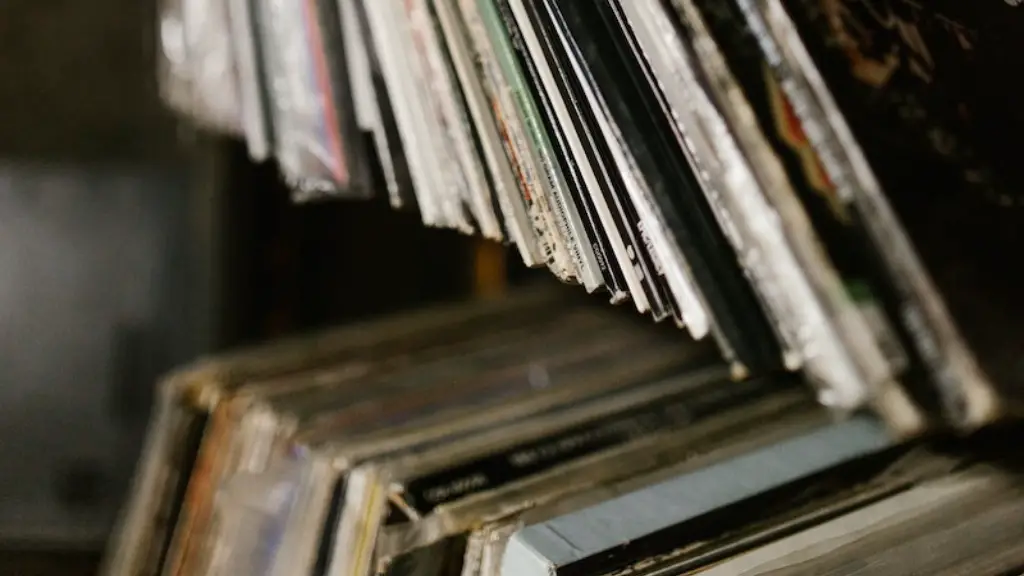Common Types of Inversion
Inversion in poetry is when the normal order of words is switched around and the language deviates from expected syntax rules. Whether it is a line of a poem or a full stanza that is inverted, it provides a creative way to express meaning and emotion in a powerful way. There are three main types of inversion in poetry or literature; they are known as skip inversion, subject-verb inversion, and reversal of word order.
Skip Inversion
Skip inversion is when the verb in a sentence, clause, or phrase is placed a long way away from the subject usually at the beginning or the end. For example, the phrase “Fair is the moon” is an example of skip inversion where the verb ‘is’ is at the end of the sentence far from the subject ‘moon’. This allows for a longer sentence, an extra phrase can be added in the middle to provide a more creative shape to the phrase or sentence.
Subject-Verb Inversion
Subject-verb inversion is when the subject of a sentence, verse, or phrase is placed after the verb. An example of this type of inversion is “Goes secret to the shade.” Here, the verb ‘goes’ is placed before the subject ‘secret’. Examples of subject-verb inversion are often seen in poems and literature, as it helps to create an aesthetically pleasing shape and draw attention to a specific phrase.
Reversal of Word Order
Another form of inversion is the reversal of word order. This is when the normal structure of a sentence is reversed and the verb is placed after the subject. An example of this usage is “Away hence are my thoughts.” Here, the subject and verb are exchanged so that ‘thoughts’ is the subject and ‘away’ is the verb. This type of inversion is useful when expressing contrast, as it emphasizes the deviation from standard syntax.
Optical Effects of Inversion
Inversion can be used to create an interesting structure and shape in a poem or line of verse. By inverting syntax in a poem or line of verse, an optical effect is created. Generally, this visual effect will draw the eye of the reader to a certain phrase or stanza, allowing for extra emphasis to be placed on specific ideas or emotions.
Inversion for Emphasis
Inversion can also be used to emphasize certain phrases or words in a line or stanza of poetry. This can be done by inverting the word order of a line, or by switching the order of the subject and verb so that the word of focus is the one that is inverted. This provides a unique emphasis on certain words in poetry and allows the poet to express their intended meaning in a more creative way.
Purpose of Inversion
Inversion can be used as a way of expressing contrast and emotion in poetry and literature. It allows poets to deviate from the normal structure of language and use syntax creatively. The purpose of inversion is to create a unique effect in writing and to emphasize certain phrases or words without having to use any explicit language.
Function of Inversion
The function of inversion is to draw attention to a certain phrase or stanza in a poem or line of verse. By inverting the order of words, the reader is directed to a certain phrase and the meaning of the phrase is further emphasized. Inversion is often used to juxtapose phrases and to create contrasts in poetry.
Use of Metaphorical Language
Inversion can also be used to enhance the use of metaphorical language in poetry. By switching around the order of words, poets can create unique shapes and images that serve to illustrate their intended meaning and emotion more effectively. An example of this is Robert Frost’s poem “Stopping By Woods On A Snowy Evening” which contains an inversion in the line “The woods are lovely, dark, and deep.” Here, Frost uses an inversion to create a metaphor that conveys his feelings of awe and isolation in the woods.
Rhetorical Devices in Poetry
Inversion is often used in conjunction with other rhetorical devices in poetry. By inverting the order of words, poets can create a shape or structure to their words that would not be possible with the normal order of syntax. Furthermore, by using inversion in combination with other devices such as metaphor and simile, poets can create a powerful juxtaposition that adds emphasis to certain phrases and words.
Effectiveness of Inversion in Poetry
Inversion is a highly effective tool for poets who are looking to create powerful and emotive pieces of literature. By inverting the order of words, poets can create unique shapes and images that serve to convey their message more effectively. Furthermore, by using inversion in conjunction with other devices such as metaphor and simile, poets can create a powerful juxtaposition that adds emphasis to certain phrases and words.
Criticism of Inversion in Poetry
Many critics believe that inversion can be used to overcomplicate a poem or line of verse and make it overly complex. By inverting words, some poets may obscure the true meaning of their poem and ultimately fail to convey their intended message. Furthermore, if the poet is not careful with inverting words, they can create a structure that is aesthetically pleasing but meaningless.
Modern Uses of Inversion
Inversion is a popular tool used by modern poets to create unique and powerful pieces of literature. By switching the order of words, poets can create metaphors and imagery that would not be possible with the normal syntax. Furthermore, many modern poems contain intricate and complex layers of inversion which helps to add depth and emotion to the writing.
Inversion in Different Genres
Inversion is not only restricted to poetry and literature, it is found in many other forms of media and art. For example, music can be used to highlight sections of a song or emphasize a certain phrase. Similarly, in visual arts, inversion can be used to create shapes and patterns that draw attention to specific images and shapes.
Advantages of Inversion
Inversion is an effective tool for poets, writers, and artists that enables them to express themselves more creatively and powerfully. By inverting the order of words, sentences, and phrases, poets can create unique and aesthetically pleasing shapes that focus the reader’s attention to a certain phrase. Furthermore, inversion can be used to create metaphors and imagery that would not be possible with the normal syntax.
Disadvantages of Inversion
Inversion can be a double-edged sword. While it can be used to create powerful pieces of literature, it can also be used to overcomplicate a poem and obscure its true meaning. Furthermore, if the poet is not careful with inverting words, they can create a structure that is aesthetically pleasing but meaningless.
Inversion and Its Impact
Inversion has had a profound impact on poetry and literature. By inverting words, poets can create unique shapes and images that enhance the emotion of their piece and allow the reader to engage with the poem in a deeper and more meaningful way. Furthermore, inversion can be used to create vivid metaphors and juxtapose emotions and ideas in a creative way.
The Future of Inversion
Inversion has been used for centuries and will continue to be an important tool for poets and writers. As language continues to evolve, new and more creative uses for inversion will be discovered. Furthermore, more poets will use inversion in combination with other rhetorical devices to create unique and powerful pieces of literature.
